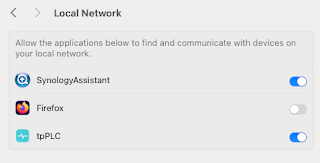As part of a new everything-on-one-box Lotus Connections 3.0 installation, I've updated my monster PC ( known as Orac ) to Ubuntu 10.10.
Orac has a quad core Intel CPU, 8 GB of RAM and 1.3 TB of storage, so he's a bit of a beast.
Having installed a 32-bit version Ubuntu 10.10, I was ready to go.
Oh, hang on, the free command only shows 3.X GB of RAM, despite my having 8 GB.
Ah, hang on, I forgot to install the PAE kernel - as I'm using the 32-bit distro, I need to use a kernel that can address more than 3.3 GB.
This is easy to fix - I simply ran the following command: -
sudo apt-get install linux-generic-pae
which installed three packages: -
ii linux-generic-pae 2.6.35.24.28 Complete Generic Linux kernel
ii linux-image-2.6.35-24-generic-pae 2.6.35-24.42 Linux kernel image for version 2.6.35 on x86
ii linux-image-generic-pae 2.6.35.24.28 Generic Linux kernel image
Now, after a quick reboot, the free command returns: -
total used free shared buffers cached
Mem: 8261504 5571908 2689596 0 46396 5081164
-/+ buffers/cache: 444348 7817156
Swap: 6538236 0 6538236
which is rather shiny.
So, on to DB2 ....
*NOTE* This is *NOT* a supported platform - it's merely for me to "play" with *NOTE*
Once I had overcome my problem with the TAR command, I started the installation program: -
cd /tmp
./db2setup
which immediately failed with: -
ERROR:
The required library file libaio.so.1 is not found on the system.
Check the following web site for the up-to-date system requirements
of IBM DB2 9.7
http://www.ibm.com/software/data/db2/udb/sysreqs.html
http://www.software.ibm.com/data/db2/linux/validate
Aborting the current installation ...
Run installation with the option "-f sysreq" parameter to force the installation.
:-(
However, as ever, Google had the answer, Google is my friend.
Antonio Cangiano has blogged here about this - the solution is simple: -
sudo apt-get install libstdc++5
sudo apt-get install libaio-dev
sudo ./db2setup
Once I did this, the DB2 installation worked like a dream.
I *love* it when a plan comes together :-)
*NOTE* This is *NOT* a supported platform - it's merely for me to "play" with *NOTE*
Geeking in technology since 1985, with IBM Development, focused upon Docker and Kubernetes on the IBM Z LinuxONE platform In the words of Dr Cathy Ryan, "If you don't write it down, it never happened". To paraphrase one of my clients, "Every day is a school day". I do, I learn, I share. The postings on this site are my own and don’t necessarily represent IBM’s positions, strategies or opinions. Remember, YMMV https://infosec.exchange/@davehay
Subscribe to:
Post Comments (Atom)
Note to self - Firefox and local connections
Whilst trying to hit my NAS from Firefox on my Mac, I kept seeing errors such as:- Unable to connect Firefox can’t establish a connection t...

-
Error "ldap_sasl_interactive_bind_s: Unknown authentication method (-6)" on a LDAPSearch command ...Whilst building my mega Connections / Domino / Portal / Quickr / Sametime / WCM environment recently, I was using the LDAPSearch command tha...
-
Another long story cut short, but I saw this: - curl: (58) unable to set private key file: 'dave.pem' type PEM from my Ansible...
-
Whilst trying to hit my NAS from Firefox on my Mac, I kept seeing errors such as:- Unable to connect Firefox can’t establish a connection t...

5 comments:
when i give
$ sudo ./db2setup
its givin
sudo: ./db2setup: command not found
@Abhilash - you need to be in the directory into which you extracted the DB2 archive before you run db2setup or, if not, provide the path to the command.
As an example: -
cd /tmp
tar xvf /media/LenovoExternal/Products/DB297/db297linux32.tar
sudo ./db2setup
or, if you've unpacked the archive into /tmp but are currently in /home/hayd, then you'd run db2setup as follows: -
cd /home/hayd
sudo /tmp/db2setup
After installing db2
how & from where i hav 2 run, bcoz
in windows we can find easily in All Programs..
but where in linux
i also searchd in applications but it is not there
@Abhilash - take a look at some of these online resources: -
DB2 on Linux Redbook
IBM WebSphere (V4.0) J2EE applications server and DB2 (V7.2) database on Linux
There are plenty of other useful online resources including IBM developerWorks
Regards, Dave
@Abhilash,
You will need to login as the DB2 User, such as db2inst1 -->
If you are logged in as a different user --> su db2inst1
Enter your db2inst1 passwd.
Now type in --> db2 connect to SAMPLE
or db2sampl --> this will create the SAMPLE database and then you can start working with DB2 :)
If you are on the lookout for a out of the box no frills DB2 Experience, try my Dubuntu Appliance --> DB2 on Ubuntu.
More Details here
http://www.vmware.com/appliances/directory/885293
Cheers!
Anil Mahadev
http://db2hitman.wordpress.com
DB2 India UG President
Dubuntu Appliance Architect
Post a Comment